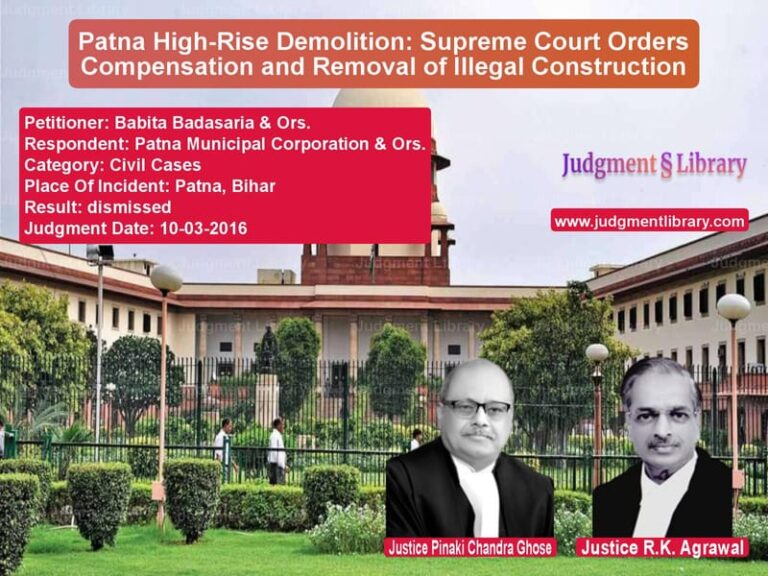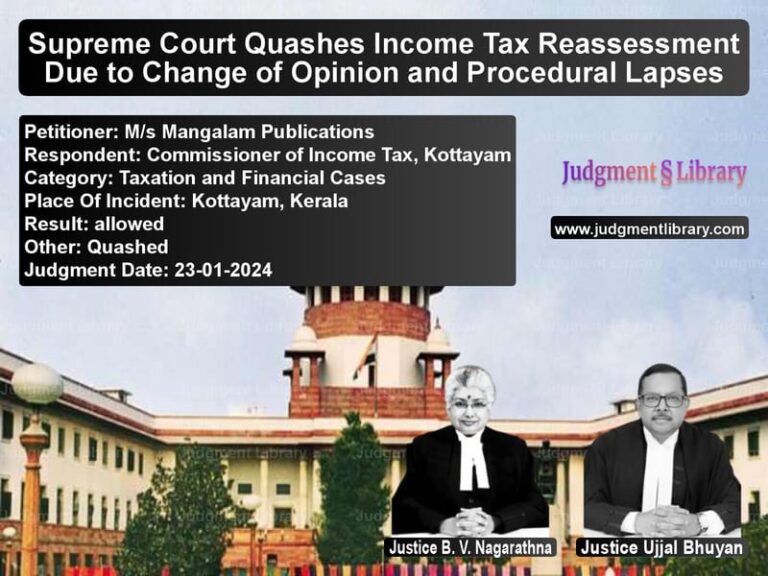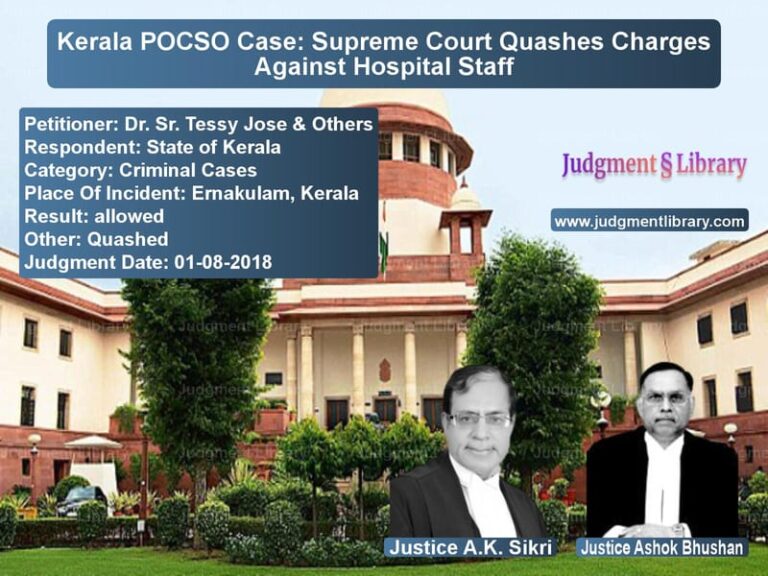Supreme Court Upholds Fair Compensation in Land Acquisition for Punjab Landowners
The case of Rattan Lal vs. State of Punjab & Anr. revolved around the issue of fair compensation for landowners whose lands were acquired by the state government under the Land Acquisition Act, 1894. The Supreme Court ruled in favor of the landowners, granting them an additional ₹1,00,000 per acre as compensation, following the principle of parity established in a similar case.
Background of the Case
The Punjab government acquired land for infrastructure development, including roads and public projects. Several landowners, including the petitioner Rattan Lal, challenged the compensation amount awarded by the authorities, claiming that it was significantly lower than what was given to similarly placed landowners.
The High Court had granted an enhancement of compensation, but the petitioners argued that they were still entitled to an additional ₹1,00,000 per acre, as per the ruling in Paramjit Panag & Ors. vs. State of Punjab. The state, on the other hand, contested this claim, arguing that the compensation awarded was just and reasonable.
Key Legal Issues
- Did the compensation awarded by the High Court meet the fair market value of the land?
- Were the landowners entitled to an additional ₹1,00,000 per acre under the principle of parity?
- Could the state government justify variations in compensation for similar acquisitions?
- Did delays in filing appeals affect the landowners’ entitlement to additional compensation?
Arguments by the Petitioners (Landowners)
- The compensation granted by the High Court was lower than what was awarded in similar cases.
- The Supreme Court, in Paramjit Panag & Ors., had granted an additional ₹1,00,000 per acre to similarly situated landowners.
- The principle of parity must apply to ensure equal treatment among landowners whose lands were acquired for the same project.
- The State had already granted higher compensation to other landowners, demonstrating inconsistency.
- Delays in filing appeals should not deprive them of their right to just compensation.
Arguments by the Respondents (State of Punjab)
- The compensation awarded was based on market rates determined through due process.
- The High Court’s judgment was fair and balanced, considering all available data.
- Delays in filing appeals should be a factor in determining whether additional compensation should be granted.
- Compensation should not be compared across different acquisitions unless all circumstances are identical.
Supreme Court’s Judgment
The Supreme Court ruled in favor of the landowners, holding that:
- The principle of parity must be applied in cases of land acquisition.
- Landowners whose land was acquired under similar circumstances must be compensated equally.
- The petitioners were entitled to an additional ₹1,00,000 per acre.
- The delay in filing appeals did not affect the landowners’ substantive rights to just compensation.
- The appellants were entitled to all statutory benefits under the Land Acquisition Act.
The Court stated:
“On the principle of parity, these appeals are disposed of declaring that the appellants shall be entitled to an additional amount of ₹1,00,000 per acre, over and above the amount granted by the High Court.”
Analysis of the Judgment
The Supreme Court’s ruling is significant for multiple reasons:
- Judicial Recognition of Fair Compensation: The judgment reinforces the right of landowners to fair compensation, ensuring they receive market-based rates for their acquired properties.
- Consistency in Land Acquisition Awards: The principle of parity ensures that similarly placed landowners receive equal treatment, preventing arbitrary variations.
- Impact on Future Land Acquisition Cases: The ruling sets a precedent for courts to ensure uniform compensation in similar land acquisition disputes.
- Consideration of Delay in Appeals: The judgment clarifies that procedural delays should not result in a denial of substantive rights, especially in cases involving landowners’ livelihood.
Impact of the Judgment
- Fair Compensation for Landowners: The ruling ensures that landowners receive just compensation, setting a benchmark for future acquisitions.
- Prevention of Disparities in Compensation: The decision prevents the government from arbitrarily granting different compensation amounts for similar acquisitions.
- Clarity on the Principle of Parity: The judgment provides clear guidance on the application of parity in land acquisition cases.
- Protection of Landowners’ Rights: The ruling strengthens protections for landowners under the Land Acquisition Act.
Conclusion
The Supreme Court’s ruling upholds the principle of fairness in land acquisition compensation. By ensuring parity with similar cases, the decision reinforces the rights of landowners and prevents arbitrary compensation awards by state authorities. The judgment serves as a guiding principle for future cases, ensuring that landowners are not unfairly deprived of their property without adequate compensation.
Don’t miss out on the full details! Download the complete judgment in PDF format below and gain valuable insights instantly!
Download Judgment: Rattan Lal vs State of Punjab & An Supreme Court of India Judgment Dated 14-12-2016.pdf
Direct Downlaod Judgment: Direct downlaod this Judgment
See all petitions in Property Disputes
See all petitions in Judgment by Kurian Joseph
See all petitions in Judgment by Rohinton Fali Nariman
See all petitions in allowed
See all petitions in Modified
See all petitions in supreme court of India judgments December 2016
See all petitions in 2016 judgments
See all posts in Civil Cases Category
See all allowed petitions in Civil Cases Category
See all Dismissed petitions in Civil Cases Category
See all partially allowed petitions in Civil Cases Category







